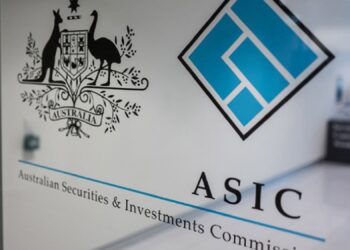Traditionally, small to medium enterprises (SMEs) develop a business plan, which more often than not, management and staff never adhere to.
We have recognised the need to implement a strategic plan that is attainable and involves all members of the business, including the chief executive and staff, in the planning process. It is called capacity planning.
The Traditional Approach
Our experience has shown that the SME community is dependent on a traditional approach to strategy that normally encompasses one or more of the following factors:
• goal setting;
• mission statements;
• business planning;
• analysis;
• vision statements; and
• SWOT.
We believe the traditional approach to this business strategy is not providing the whole picture for the business.
This is largely because the source for making strategic decisions is often based on historical outcomes, including previous years’ profit and loss figures, sales budgets and revenue levels.
This traditional market practice eventuates in a bias in growing ‘turnover’. (See diagram below.)
Management focus on turnover alone only serves to introduce further stresses in business because of the inability to sustain a strategy of continuous growth.
Typically, businesses heavily weighted towards growth in turnover rarely attain best practice. This highlights a diminishing rate of return, as the business remains fixated on increasing actual turnover. Few businesses are aware of their maximum capacity or the uncontrollables that exist within the business.
Small business is often focused on a strategy of growth with little regard for the capability of the business.
The common fallacy is that an increased turnover and economies of scale will yield efficiencies.
Whether the business is at 30 per cent or 60 per cent efficiency (as seen in the diagram), the business has the capability to attain a higher running rate without actually altering the size of the resource mix.
As the diagram shows, experience confirms that no business ever achieves 100 per cent of its optimum capacity due to uncontrollable factors within a business, for example, sickness, holidays, and exogenous shocks. The best-managed businesses achieve approximately 70 to 80 per cent capacity.
Turnover does not determine efficiency. Business owners must be aware of the capacity and efficiency of their business, which then determine the strategic planning of their business.
Every business has the capacity to achieve an optimum level of turnover given the current levels of:
• staff;
• resources;
• product;
• price; and
• equipment.
Capacity Planning
Business practice within the SME market has a tendency to focus their success based on revenue and profitability. Consequently, management is constantly immersed in detail. For example, the traditional business plan tends to be content driven, which in turn imposes an internal business culture that is unable to envisage the broader direction of the business. This further highlights the need for management to attain a contextual perspective when developing and implementing their business strategy.
What is not considered in strategic thinking is the capacity of the business. Essentially, capacity within an SME business is the maximum revenue that can be achieved given the current resource mix.
Capacity planning provides a contextual framework by prioritising the business issues within the business, such as staff, motivation, sales, product and management.
Capacity planning is effective because it enables management to review its current resources and inefficiencies.
Capacity planning looks at the following key factors:
• running rate — efficiency level corresponding to the current turnover; and
• current turnover — sales revenue for the current financial year.
The capacity of any business can be determined by the following simple formula:
Capacity =Current Turnover
Running Rate
The Capacity Model
The capacity model is an aid to the development of strategy in business. The model identifies the need to focus on either platform issues and/or growth issues.
Platform issues
The gap between where a business is operating and capacity is termed the platform issues (inefficiencies). Addressing these issues within a business maximises the current capacity.
Platform issues include functions and tasks that do not increase the capacity of the business, but raise the efficiency of the business. Common platform issues tend to focus within these areas of an SME business:
• business support functions, that is, IT, legal, human resources and compliance; and
• business operation functions such as sales, marketing, training and output.
Growth issues
Growth issues include functions and tasks that increase the capacity of the business.
Common growth issues of a business are:
• business management functions, that is, distribution, positioning, client management systems; and
• business operation functions and tasks such as new products or services and pricing.
Once the platform and growth issues have been identified, an implementation schedule (known as the capacity plan) is designed specific to the needs of each business.
The most common implementation program would be an alternating strategy of platform and growth over an 18 to 24-month period. An example of this strategy has been outlined in the table below.
Note there are no specifics on how large the capacity of any business can be increased to, nor how quickly the running rate can be raised. The determining factor here is the capability of the resource mix to undertake a sustainable rate of growth within the business.
Chris Dionne is the Australian chief executive and one of the founding partners of international business coaching company, Shirlaws.www.shirlaws.biz





